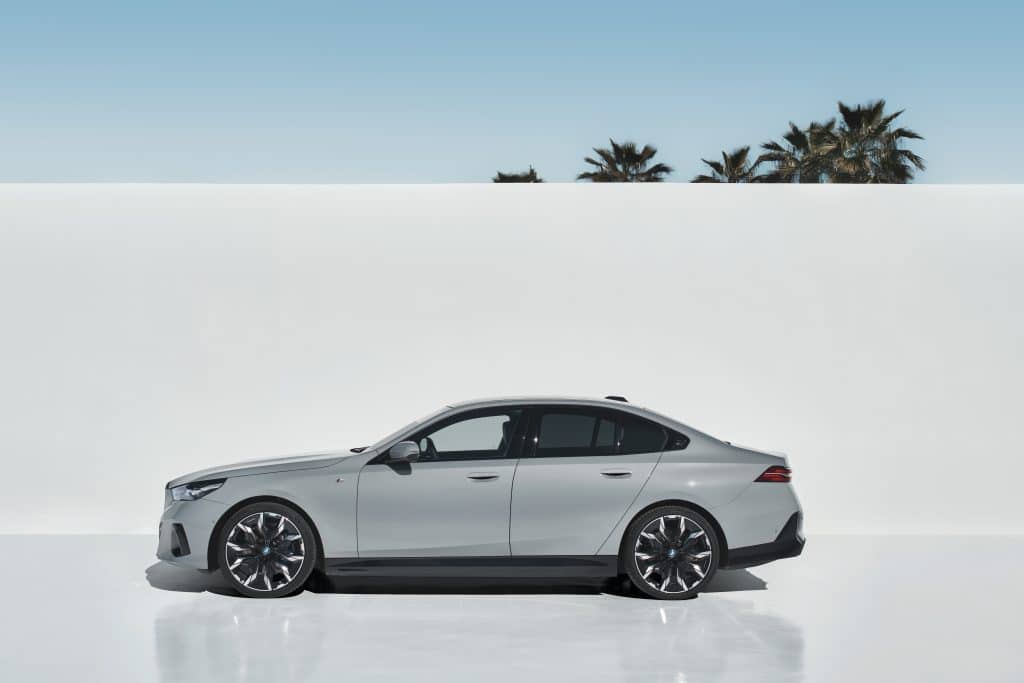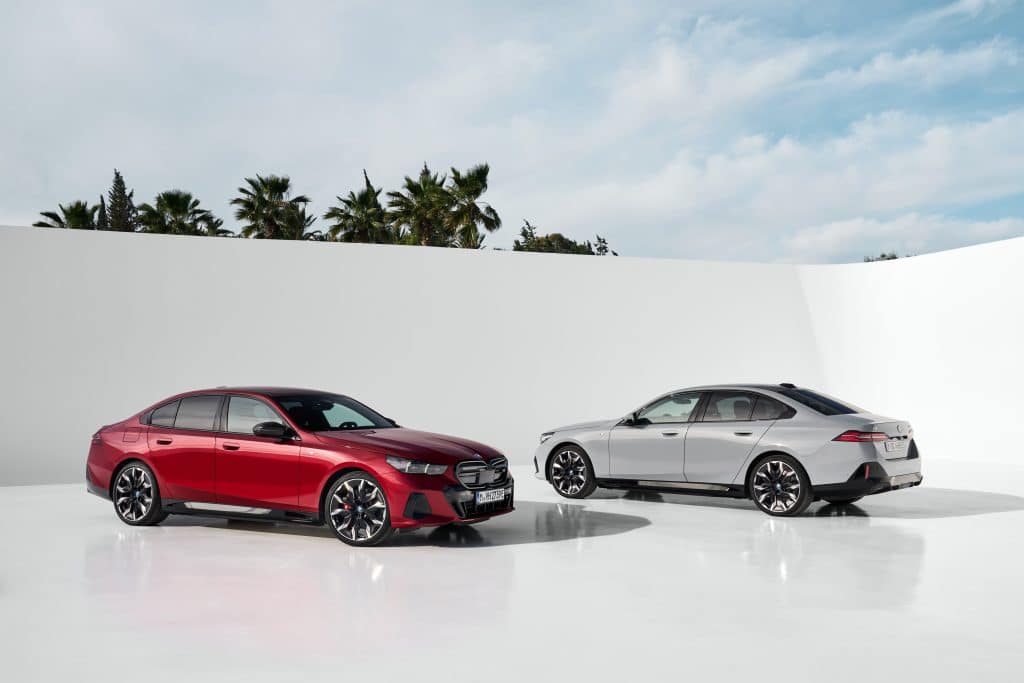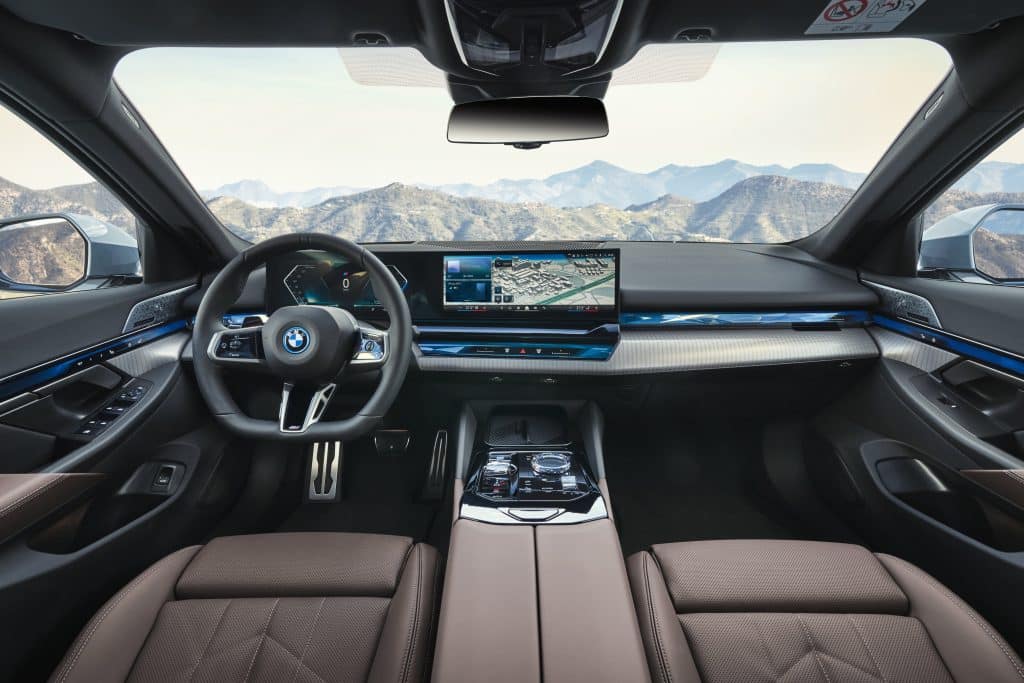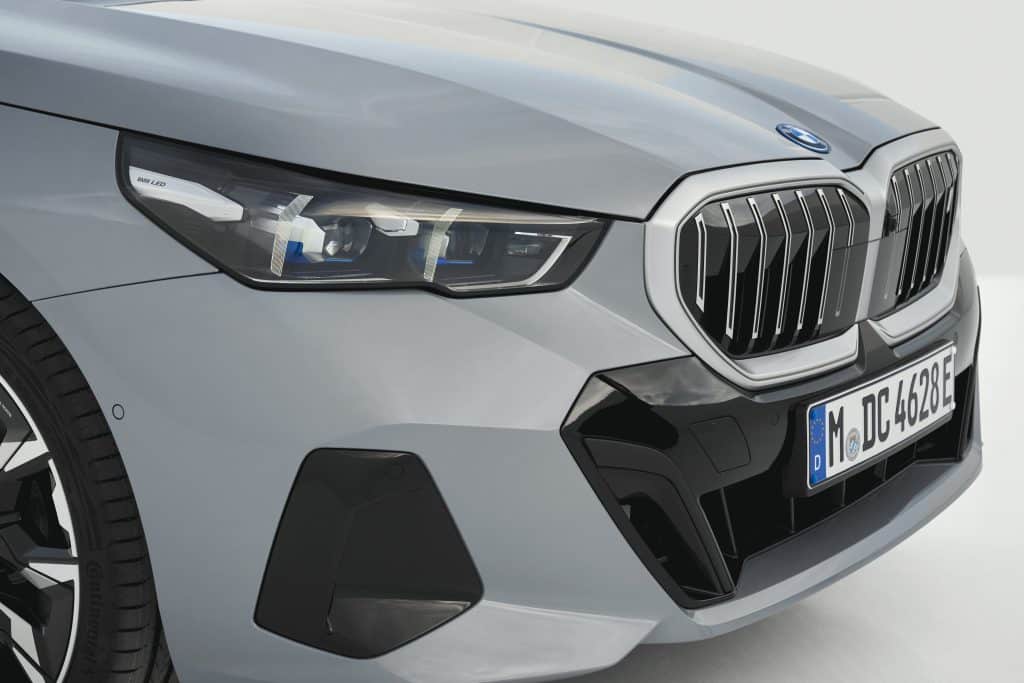Just weeks after Mercedes updated its E-Class, BMW releases its new 5 Series. No one is surprised. For rarely have two models been so closely positioned against each other as the Mercedes E and the BMW 5.
Naturally, we’ve taken a look at BMW’s newcomer, and the race between two of the strongest premium brands on the market.
Exterior

Let’s start with the car’s exterior. Not much has changed in terms of size – in line with the trend, the 5 Series has grown slightly in all dimensions. The length is now past five meters and now measures 506 centimeters. Compared to the Mercedes E, the new BMW 5 is slightly longer, taller and wider.
Rather, it is the design language that separates the two pairings. In line with its history, BMW keeps straighter lines compared to the more streamlined Mercedes. BMW also opts for a more discreet appearance – where Mercedes is sprinkled with stars, only the front, the ‘kidneys’, clearly convey that this is a BMW.
The result is successful. With black side skirts, BMW manages to hide the bulkiness of the body and give the new 5 Series more elegance than the i4 and i7, but still sportiness – a bit like a mix of classic BMW 5 with Polestar’s futuristic lines.
As usual with BMW, there is a range of stylish paint and wheel options. A distinctive feature of BMW is that the rims have a very futuristic, almost aggressive design, with sharp edges. This is where BMW differs completely from Mercedes.
Engines

With the 5 Series, BMW has fully prepared for the future: the car comes with gasoline and diesel, mild hybrid, plug-in hybrid and pure electricity. The idea is that you don’t have to choose a model according to its powertrain – compared to Mercedes, where the EQE and the “regular” E have completely different designs.
Interestingly, it is the BMW i5, the electric models, that are coming to Sweden first – the basic BMW i5 eDrive40 and the sports model BMW i5 M60, an electric equivalent of the current one. Neither model is a slacker – 0-100 runs in 6 and 3.8 seconds respectively.
The battery is 81 kWh, and should last 516 (M60) and 582 km (eDrive 40) according to the WLTP cycle. A new MAX RANGE function will help users who need extra range to easily turn off power-hungry functions and limit the power of the throttle. Charging 10-80% should take about 30 minutes, and going 15+ miles should take just 10 minutes in favorable conditions.
Later on, plug-in hybrids, which can go up to 10 miles on electricity, and the basic models with a mild hybrid, i.e. a battery charged by excess energy, for example when braking.
Interior and functionality

In today’s premium sedans, traditionalists don’t bother. Gone are the controls and classic panel options – touchscreens and LED lighting are the order of the day.
But while the Mercedes feels almost like a spaceship, the BMW is more austere and sporty. The dashboard is characterized by the BMW Curved Display – a 12.3-inch instrument panel and a 14.9-inch infotainment screen mounted under the same glass. Even the ventilation is recessed and hidden, further adding to the modern feel.
Compared to competitors like Tesla, BMW has still chosen to keep a lot of physical buttons and controls, including buttons that trigger shortcuts to selected parts of the infotainment system. The infotainment system is good, and new features include the ability to play console games directly on the display (when the car is parked). Apple CarPlay and Android Auto are both standard.
The interior is high quality. Leatherette – Veganza as BMW calls it – is standard in the i5, and there’s a wide range of choices for both panels and seats. Four people sit well; for a fifth, the old cardan tunnel (which on electric models is filled with batteries) is a poor fit.
For the first time, it will also be possible to get the 5 series with a panoramic glass roof. The trend has grown stronger and the fact that Tesla put the glass roof as standard in the Model 3 / Y will probably mean that we will see more and more of this.
From a loading perspective, the BMW 5 is good. Although it lacks a frunk, the boot is 490 liters with plenty of space under the floor. Towing weight is 1500kg in the eDrive 40 and 2000kg in the M40.
Accessibility

The BMW i5 will be launched in October, but is available to order immediately. The BMW i5 eDrive40 has a starting price of £815,000. The top model BMW i5 M60 costs from 1,257,000 SEK. As usual, you can expect
In spring 2024, the plug-in hybrids BMW 530e, BMW 530e xDrive and BMW 550e xDrive will arrive, and in about a year’s time the first combination (Touring) is expected.
Interestingly, BMW makes no mention of the mild hybrids. It is becoming increasingly clear that the focus going forward is on electricity, with plug-in hybrids as an option for those who need to drive long distances at high speed on the highway (Germans).
Reflector
It’s hard to pick a winner between BMW (i5) and Mercedes (EQE). Objectively speaking, you get a little more for your money in terms of battery with the Mercedes EQE – 90 kWh versus 81 kWh. Otherwise, it’s almost a dead heat.
Taste-wise – do you like BMW’s austerity, or Mercedes’ spaceship? Your choice. Crockett & Jones or Santoni?
There are both positive and negative aspects to the close competition between two brands. We saw it once in Sweden, when Volvo and SAAB competed for the Swedish people. Competition encourages development. But at the same time it drives uniformity.
Is it perhaps like SAAB and Volvo that the competition is not in the other party, but elsewhere? That you can get a lot of car for a lot less money with new brands like Polestar and Tesla – if you don’t care about the possibility to customize your vehicle?
Because when it comes to personal choice, old is still old. Premium feel in BMW and its ilk is no longer so much about engines – now comfort is a luxury. The luxury of getting your car just the way you want it, the luxury of a slightly more comfortable seat or more ergonomic driving position.
Is it worth it? Your choice.

